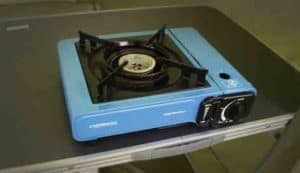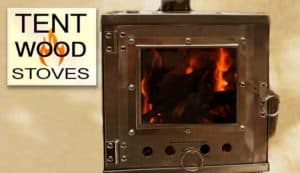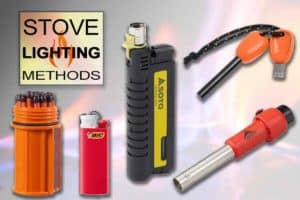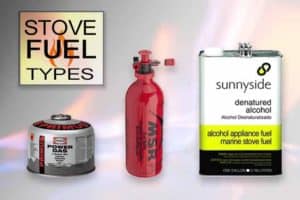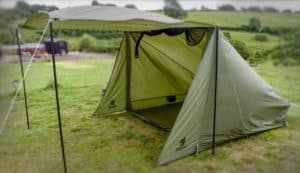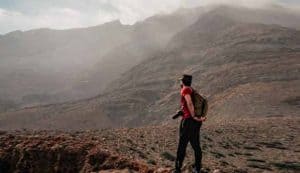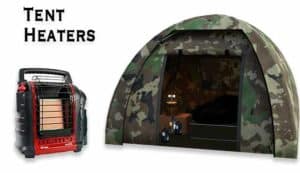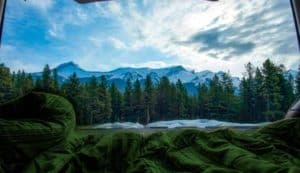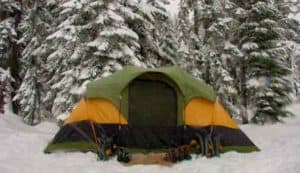This page may have Commerce Content. If you buy something from our posts, we may get a small share of the sale. Click here for more.
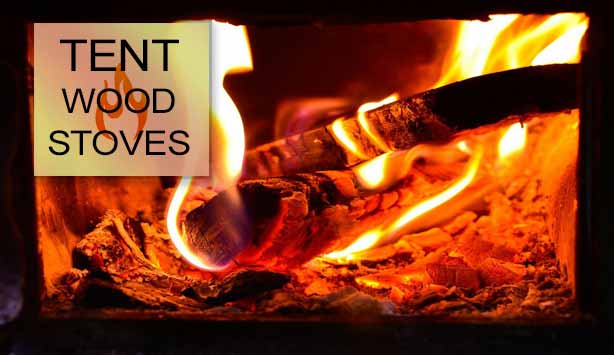

Editor & Article Writer for Outdoor Wilds
Wood Burning Tent Stove Buying Guide
One of the most enjoyable types of camping for me is winter camping. Especially hot tenting in snow conditions. Essential to this practice is the wood burning tent stove.
In this article I have put together an overview buying guide on tent stoves for people who may be considering their first hot tenting trip.
Tent stoves are not rocket science, but there are a number of factors that may not be obvious to a newcomer.
Read on further to find out all the key points to look out for when trying to decide on what wood stove to use.
Popular Posts
As an Amazon Associate I earn from qualifying purchases. Thank you for helping to support the site.
Size of Tent
The first consideration when looking to choose a wood burning stove for a tent is the actual size of the tent itself.
This is particularly critical if you’re looking to camp during the winter months. When temperatures drop as low as minus 30 degrees celsius.
It’s far better to oversize with your stove than to have an underpowered stove for your tent space. This saves a lot of time having to add wood to the stove to keep the temperature comfortable inside the tent.
There is no exact science to determine the size of the stove to suit the tent space area. There are many factors such as the type of wood being used, ventilation, efficiency of the stove and of course ambient temperature.
My advice is to first look at the stove manufacturers specification for that particular stove. Sometimes they will tell you the size of the tent that’s ideally suited for a stove.
Occasionally you will see a Kilowatt output rating for the stove. This tends to be more common for European stove manufacturers for some reason.
For example, you may see a stove rated at 2.5 KW which is ideal for a 10 ft x 10 ft wall tent, to keep the ambient temperature at around 20 degrees celsius.
The volume of the stove is more typically used to match the size of the tent. A volume of 7 cubic feet is ideal for a 10 ft by 12ft wall tent.
Types Of Tent
Canvas is the material of choice for hot tenting during the winter months. The reason canvas is so popular is due to its heat and humidity control, which make it ideal for wood stoves.
I suggest using a canvas tent with material at least 10.1 oz / 340 gsm weight. This will ensure the tent lasts for many years, plus have good heat retention.
Wall or Bell Tents
Wall tents are more suited for longer set-ups, where you may be using the tent as a base camp for a number of weeks.
Bell tents are great for shorter trips and tend to cope with stronger winds more easily. The larger bell tents can sleep up to 8 people.
If you’re planning on backpacking with a wood burning stove, Onetigris offer a lightweight tent made from 20D silicone coated nylon that’s ideal for weekend hikes for 2 people.
Fire Retardancy
When it comes to using tents with a wood burning stove, it’s essential the tent has a certified flame resistance.
The tent must meet the CPAI-84 standard. Read here for more information on flame retardant specifications.
Portability
Portability very much comes down to how you’re going to travel to your chosen camping spot. If you’re car camping and it’s less than 500 metres, the size of the stove is less of an issue.
Remember, the size of the stove must match the size of the tent and be able to maintain heat for the weather conditions outside.
Cylinder stoves tend to be more lightweight and easier to pack than their box stove counterparts.
There are no major differences between box and cylinder stoves. Cylinder stoves tend to be longer which allows for longer pieces of wood to be burnt and less sawing.
For backpacking something like the 3W Tent Wood Stove which is collapsible and weighs only 4.01 Lbs springs to mind.
When it comes to box stoves, the Winnerwell Nomad is one of my favorites. It’s made from stainless steel and has an 800 cubic inch firebox. Weighing 20 pounds in total, the Nomad is ideal for winter sled camping.
Stove Material
The material of a tent stove comes in various forms.
- Steel
- Stainless Steel
- Titanium
Out of the 3 types of material, the titanium stove is ultra lightweight. Titanium has no problem with high temperatures with a melting point well over 3000 degrees celsius.
The downside to titanium stoves is the ability to retain heat. Compared to a steel built stove you’ll have to tend to the fire a lot more often.
Stainless steel is the best compromise out of all the materials for tent stoves. Of course you have no issue with rust the same as the titanium stove and it is fairly lightweight.
Tent Stove Features
There are a host of features to look out for when choosing a tent stove. Some of the most common and useful are listed below.
- Dampers
- Spark arrestor
- Stove jack elbow
- Side grates
- Wood grate
Dampers
The most important feature for any tent stove is the damper. Dampers control the flow of air into and out of the fire box. This allows you to regulate the heat output from the stove.
You’ll find a pipe damper on almost all stoves. This damper controls the air flow up the pipe stack. Too much air and the stove will burn more quickly.
Some of the more expensive stoves have a damper on the front of the fire box. This adds even more control to the air flow inside the fire box.
Some have eyelets at the base to attach guy ropes for extra stability of the pipe stack in strong winds.
Final Thoughts
I can’t stress enough the importance of making sure the size of the stove is going to be able to heat the tent area.
It’s a real pain having to keep adding wood to the fire box because the efficiency of the wood stove doesn’t match the cubic volume fo the tent.
If in doubt, always size up on the stove. I’d suggest talking to the stove makers to see what stove they recommend for the size of your tent.
Other things to remember is the portability of the stove and finally make sure the tent has a certified fire resistance. In some States it may be a requirement to be allowed to hot tent.
Check out my article for more information on how to use a wood burning tent stove.
A last word goes to my favourite “kindling stick selector” Herbie…”I love kindling sticks I do” 🙂

Read my cold weather backpacking stove guide to find out more about high efficiency stoves in low temperatures.
Popular Posts

